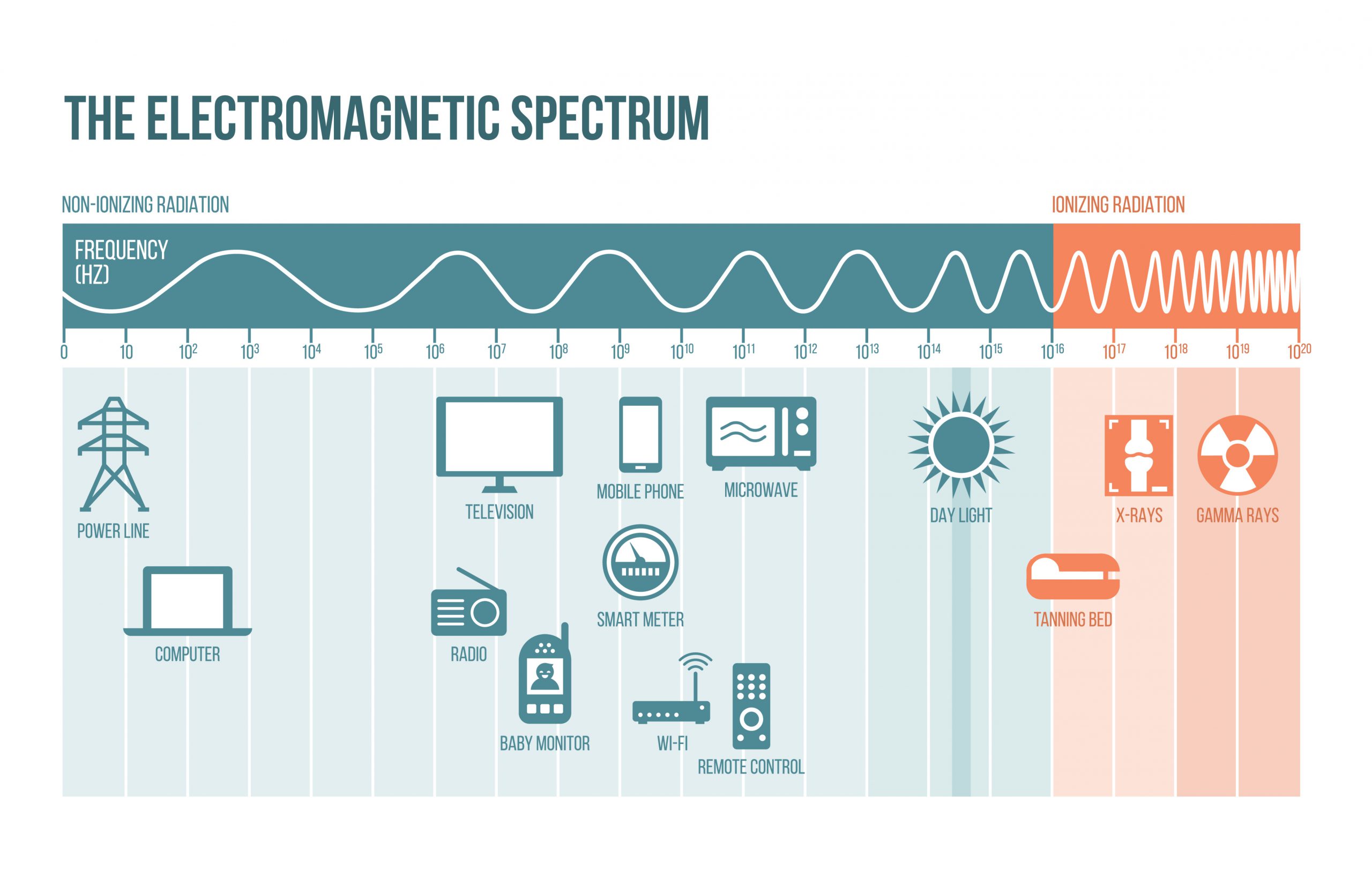What is the Electromagnetic Spectrum and why should you care?

Life, as we know it, is heavily reliant on a finite, but invisible resource. Are we equipped for the future?
Electromagnetic (EM) radiation impacts almost everything we do in our day-to-day life. As technologies progress, we are becoming increasingly reliant on spectrum use, from how we get our information and are entertained, to ensuring national security. So, if anything was to go wrong, it may have significant implications on how we live our life.
What is spectrum?
You can’t see or feel spectrum, but spectrum is used by any device that communicates wirelessly – such as televisions, car key fobs, industrial wireless technologies and satellites, to name a few.

How is spectrum use managed in the UK?
The EM spectrum is a finite resource and with only a limited amount of spectrum available, it needs to be managed carefully. Certain bands of spectrum are used for different purposes. For example, mobile companies use different bands of the spectrum to TV companies. Care is needed to prevent spectrum services interfering and causing disruption to people and businesses. This is especially vital to ensure emergency services run smoothly. In the UK, Ofcom is the regulator for the communications services that we use and rely on each day.
How does EM affect your industry?
In our race to embrace autonomy and Internet of Things (IoT) across sectors, we have developed interconnected environments that are highly dependent on the performance and resilience of a digital infrastructure that provides critical functionality for businesses. From energy to transport, manufacturing to e-agriculture, space to creative industries, sophisticated electronics systems are being utilised as never before.
However, as part of the 4th Industrial revolution, such connectivity creates vulnerabilities across networks and systems that are open to electromagnetic (EM) disruption. Such disruption is unique as, unlike cyber-attacks, it leaves no trace and can occur at distance – either through intentional EM interference (IEMI), electromagnetic pulses (EMP) or unintentional electromagnetic interference (EMI) from other sources. The reliability of the electromagnetic spectrum will need to be considered as this digital infrastructure will rely on the continuous and uninterrupted transmission of data.
Going back to the question “Why Should I Care?”, KTN has set up the Electromagnetic Spectrum Innovation Network to work with strategic spectrum stakeholders and spectrum challenge holders across sectors, on the issues and opportunities surrounding the use of the spectrum for various applications.
The spectrum is a finite resource, and its efficient management will help the UK economy to grow. We want to know:
- What critical infrastructures rely on digital electronic infrastructures (either used now and/or emerging in your sector) and are there specific workstreams focusing on electromagnetic interference?
- What would the cost be to your businesses if there were a critical failure to automated systems through EM interference?
- Is your sector aware of and/or considering this threat?
- Is there a place for a KTN education piece specific to your sector? (‘Have you considered EM interference and why you should’ for example)?
- Would you/your sector welcome a thought leadership piece on this subject?
If these questions have piqued your interest, given rise to more questions, or if you have ideas for a solution, we invite you to join this Electromagnetic Spectrum Innovation Network community.

